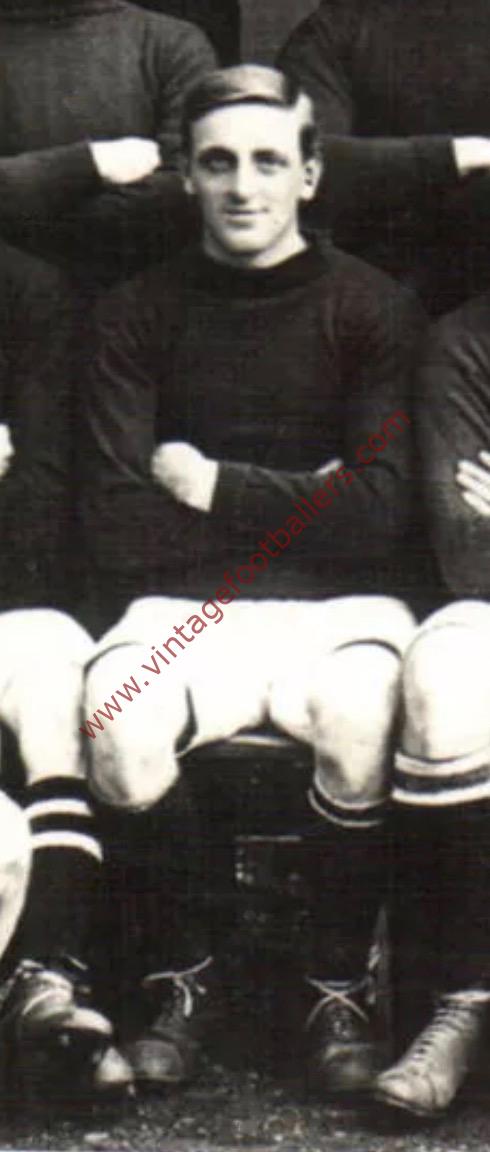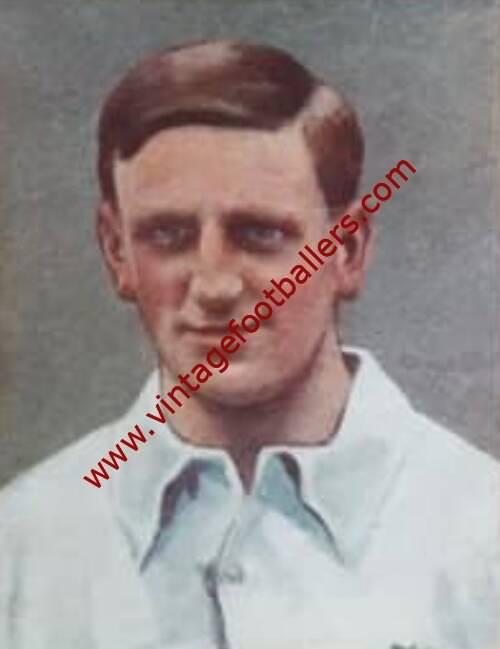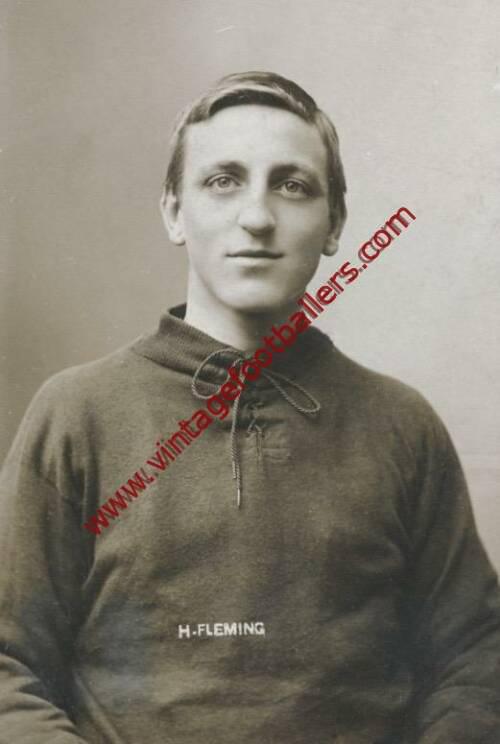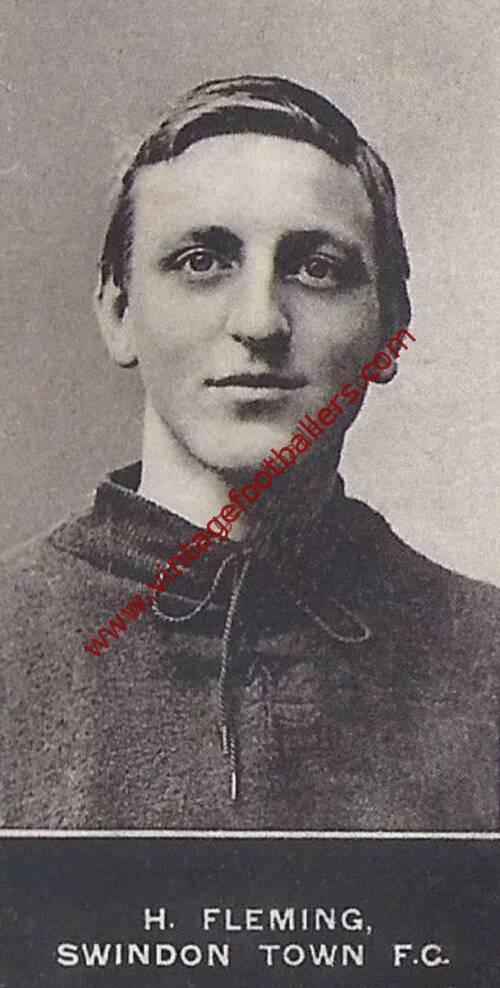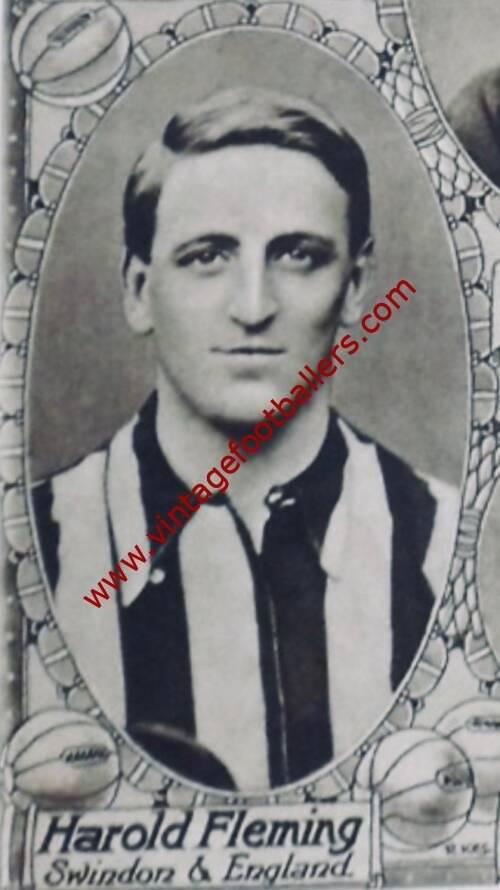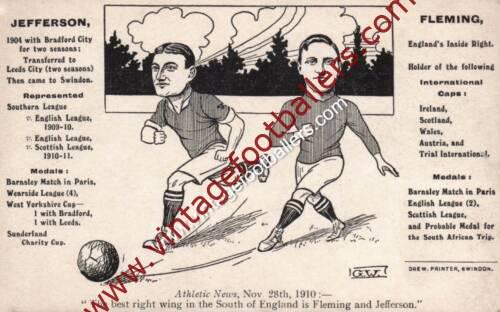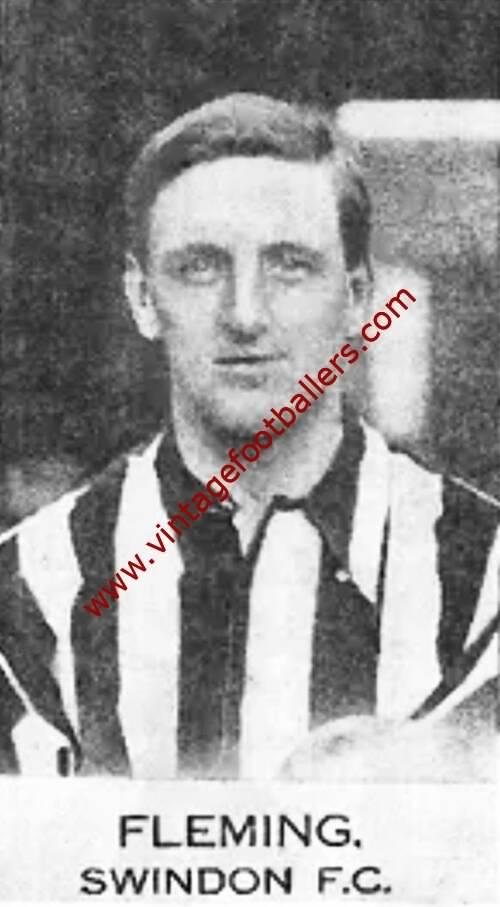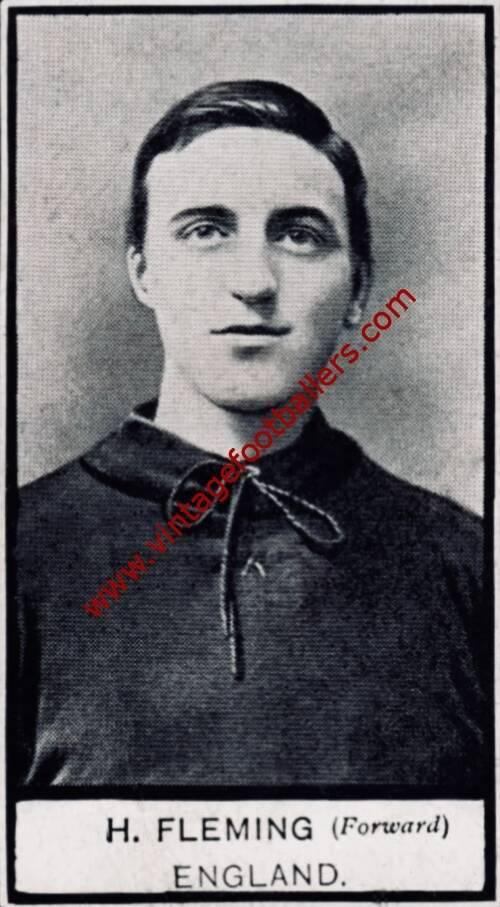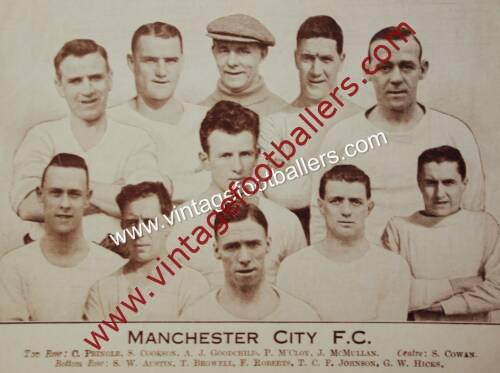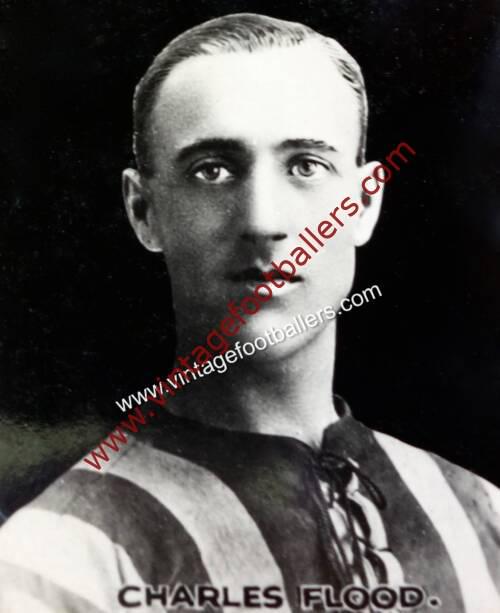Please choose your photo size from the drop down menu below.
If you wish your photo to be framed please select Yes.
Note: 16″x 20″not available in a frame.
Images can also be added to accessories. To order please follow these links
£8.95 – £49.95
Please choose your photo size from the drop down menu below.
If you wish your photo to be framed please select Yes.
Note: 16″x 20″not available in a frame.
Images can also be added to accessories. To order please follow these links
One club legend Harold Fleming was an inside forward and was born at Downton in Wiltshire. He began his football career at St. Marks YMFS in 1903 joining Swindon Amateurs in 1906 before being invited for a trial at Southern League Swindon Town in October 1907. Fleming scored a brace in a 4-0 win over Salisbury and was swiftly signed on a full-time basis. Seven days later, on October 19th, 1907, Fleming made his senior debut versus Luton Town , scoring one goal, creating two others, and missing a penalty, as the Town won 4-0 again. Fleming finished as top scorer that season, with 17 goals from 30 appearances.
Over the next 17 years he became a Swindon Town legend scoring 204 times in 336 games for Swindon and if not for World War One his career may have been even more fruitful, eventually retiring in 1924. During his time at Swindon, the team won the Southern League championship twice in 1911 and 1914, and also reached the FA Cup semi-finals twice, in 1910 and 1912, their only two semi-final appearances, where they lost to eventual winners Newcastle United at White Hart Lane in 1910. In the second semi final, versus Barnsley in 1912, Fleming was obviously seen as the dangerman, and he was singled out for some particularly rough treatment. The injuries he sustained in the 0-0 draw at Stamford Bridge not only ruled him out of their 1-0 replay defeat at Meadow Lane a few days later but kept him out for 10 months. In 1914 it was said of him “No man has had more to do with the rise of Swindon than Harold Fleming”.
His career was interrupted by the onset of the First World War which forced the suspension of peacetime football, during which he served in the Armed Forces as a physical education instructor, but he resumed with Swindon Town after the conflict. He played in Swindon’s first four seasons in the Football League after 1920 including scoring 4 goals in their sensational inaugural League fixture, a 9-1 win over Luton Town that August which remains the club’s record League victory. Fleming’s last game was on 9th April 1924 against Brighton & Hove Albion, when he again scored in a 4-0 win.
He won 11 caps for England between April 1909, when, after twice being reserve against Ireland and Wales, he made his international debut against Scotland at The Crystal Palace, playing his final England game at Hampden Park in April 1914 in the last England international before the First World War (he scored in a 3-1 defeat), scoring 9 goals including a hat-trick in a 6-1 win over Ireland in Dublin in February 1912. He holds the record for the number of England appearances made by a Swindon player. He was also the first Wiltshirian to represent England. He also went on the FA’s 1910 Tour of South Africa scoring 3 goals in the two Test Matches in which he played. He also represented The Southern League on 6 occasions, scoring 5 goals.
Fleming’s legendary status in the minds of Swindon supporters is cemented by a road named after the forward close to the County Ground named Fleming Way and a statue which stands in the club’s foyer.
NB an interesting photograph of Fleming, wearing a Southern League representative match jersey for a match against The Football League in 1910, albeit published in 1920, almost certainly taken in 1910.
| Weight | N/A |
|---|



